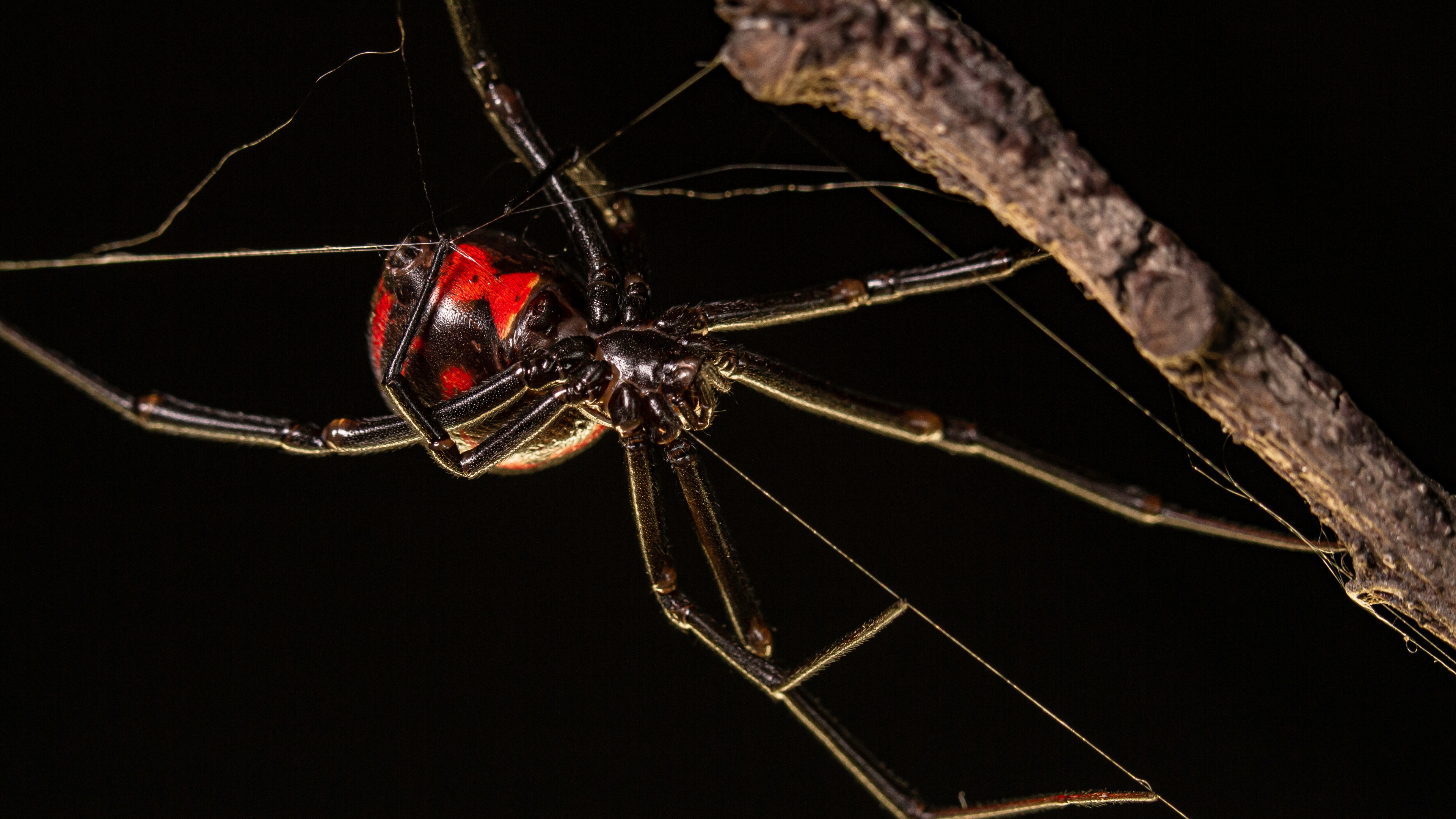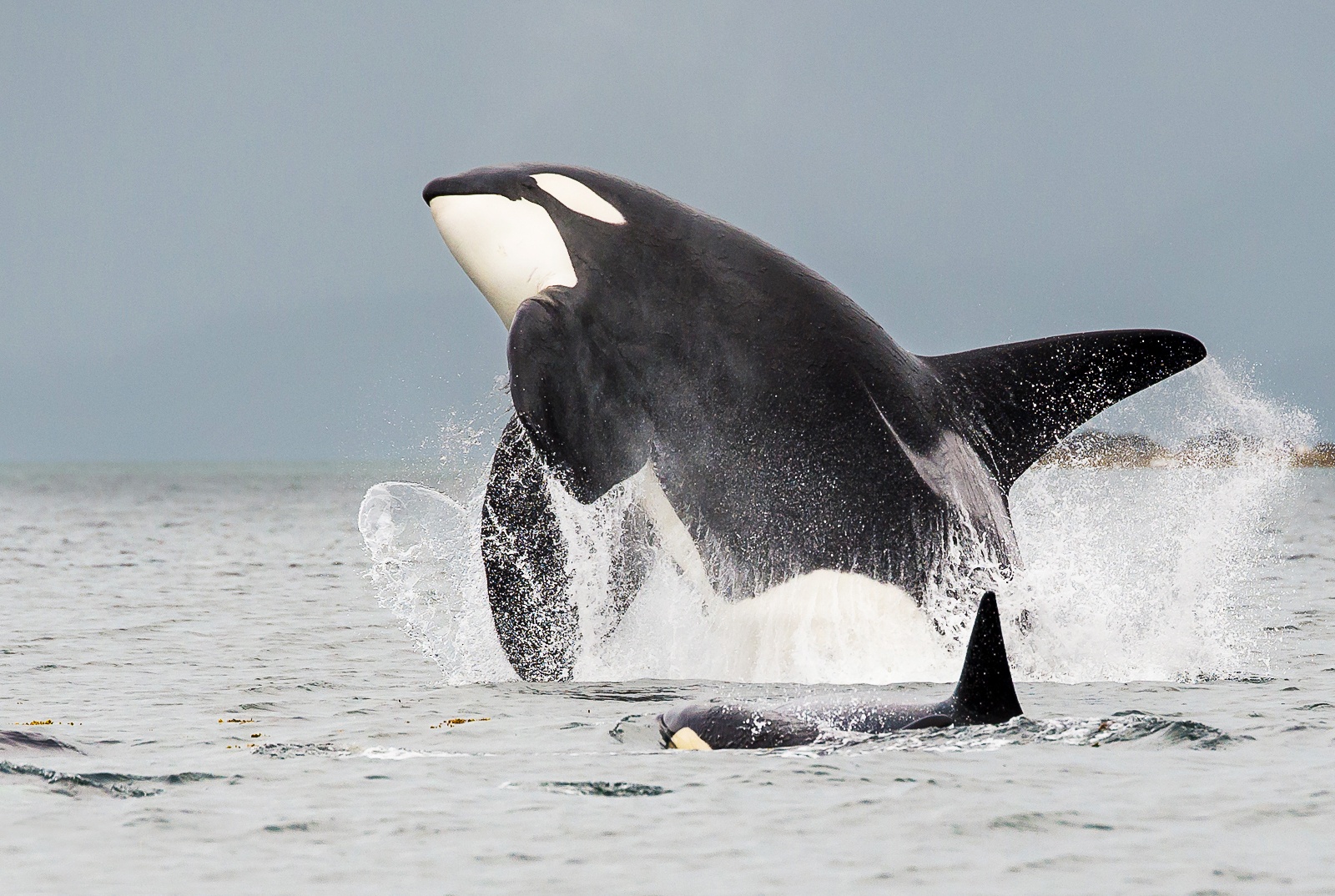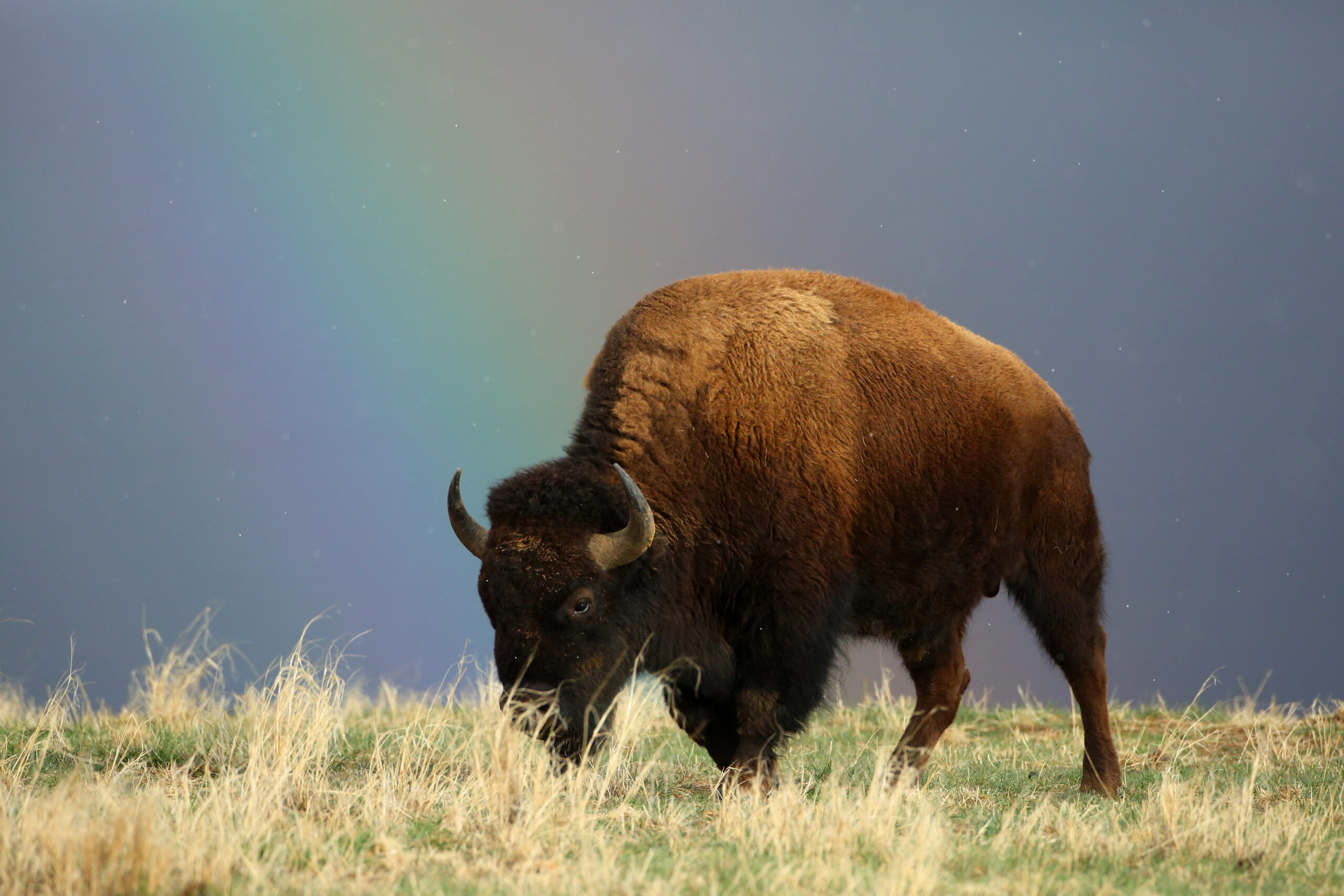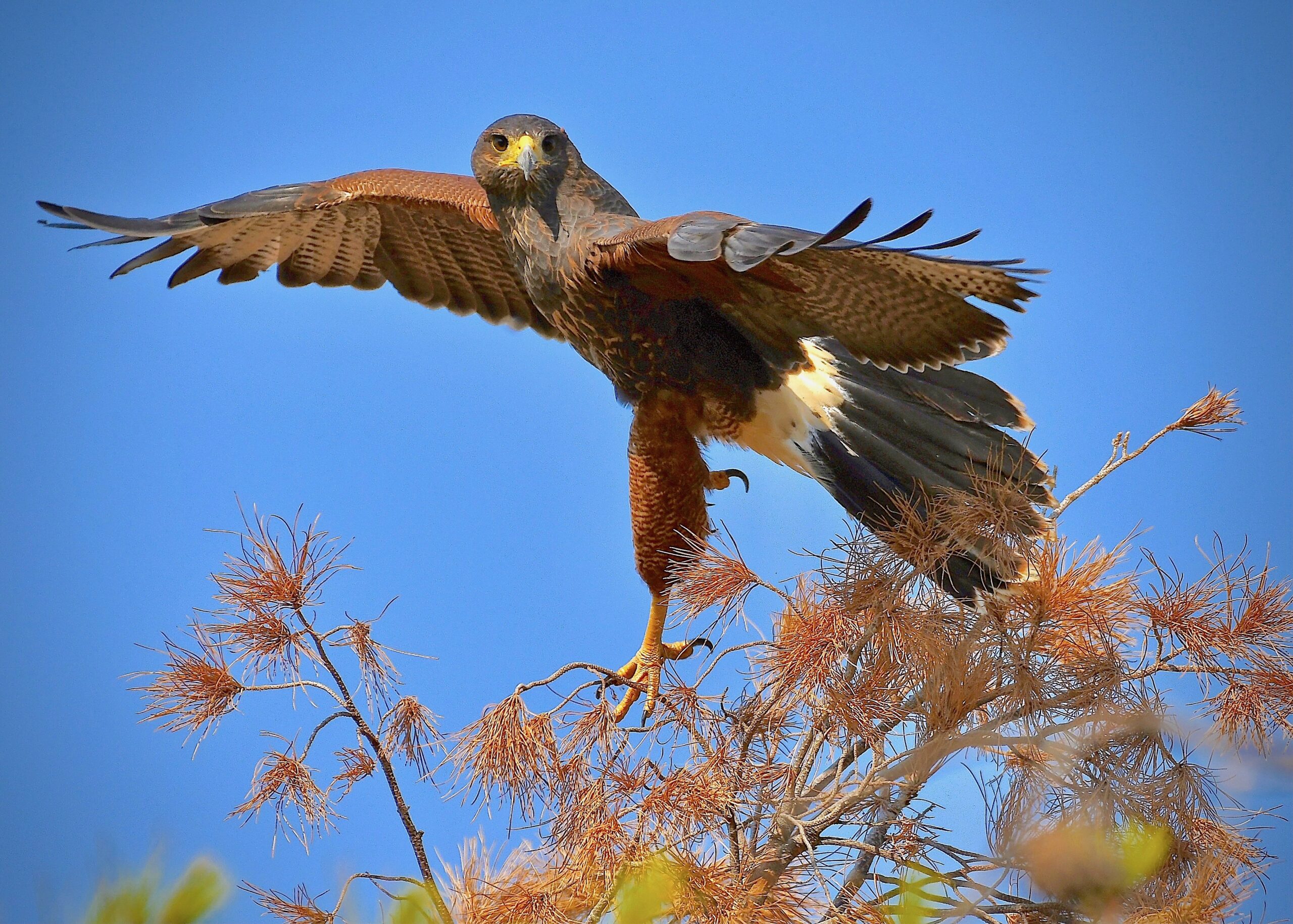We have much more to do and your continued support is needed now more than ever.
Girl Boss: Wildlife Edition
As this year’s Women’s History Month comes to a close, many powerful, brave, and influential women from across history have been highlighted for their incredible contributions to society, but it’s not just humans who deserve recognition. While rare, female-dominant wildlife species play a powerful role whether they’re as big as an orca or as tiny as a black widow. No matter if it’s swimming, flying, spinning, or stampeding, learn about four species that are the true definition of girl boss.
Black Widow

Female black widows are the most toxic spiders in North America, with venom 15x stronger than a rattlesnake’s, as they have larger venom glands and longer fangs than widow males. The red hourglass on the underside of a female black widow sends a clear message of sexual reception – and of danger. They earned their name because females are known to eat their mates after copulation (otherwise known as girl dinner). But don’t worry – despite this gruesome reputation, most North American black widow males survive mating, as the only known black widow species that regularly cannibalize their mates resides in the Southern Hemisphere.
The female black widow is approximately 1.5 inches (38 millimeters) long, which is up to 20x larger than males. They are carnivorous, hanging upside down, awaiting prey, and using their “spidey senses” to detect vibrations in their silk-like webs. Once an intruder is trapped, they quickly weave glue-like webbing around their prey and inject them with venom, paralyzing them until later liquifying and eating them.
The reclusive male black widow is hardly ever seen by humans, and after mating, doesn’t stick around for parental duties even if he manages to get away with his life. The eggs are transferred into small sacs containing 200-250 eggs each, which female black widows are very protective of – and this is when they are at their most dangerous. They are capable of producing up to 20 sacs (4,000-5,000 eggs) in their lifetime. Although venomous, the black widow is not considered aggressive unless threatened.
Orcas

Unlike their popular name “killer whale” suggests, orcas are neither whales nor are they particularly aggressive toward humans. These playful giants of the sea are actually large, matriarchal, family-oriented dolphins that can be found in every ocean across the world! They’ve also recently become an internet sensation for sinking a number of boats off the coasts of Europe and Africa over the past few years – most likely as unintentional consequences of playful behavior among juveniles. Like most orca pods, several of the boat-sinking squads are led by mother and grandmother orcas – who apparently prefer to hang back and watch as their children ram into the boats. They’re not like regular moms, they’re cool moms.
Most orca pods are matrilineal, with mothers passing knowledge and leadership within the pod from mother to daughter. Orcas are also one of the only animal species known to experience menopause, which females reach when they turn about 50 years old – the same age that most males reach the end of their lives. But female orcas can continue living for several more decades, leaving them as the oldest and wisest individuals to lead a pod. In fact, it’s precisely because of the need for experienced leaders that orcas experience menopause at all.
Menopause only happens in tightly social and familial species, where passing on generational knowledge is more important than continuing to add to the population in old age. Orca calves are disciplined by their mothers, and older females are especially important in orca pods. One study even found that orcas with grandmothers, who can pass on knowledge about food sources, social behaviors, etcetera, are more likely to survive than those without. You go, granny!
Bison

Most people regard bison as a symbol of freedom and respect that is commanded by their seemingly subdued yet striking presence. Looking into their dark brown eyes (from a safe distance), you may find yourself in awe of how such majestic creatures could even exist.
Turns out, they behave just like many other herd-oriented animals. While females (cows) often travel in herds, males are relatively antisocial until mating season, where they will engage in violent competitions and rituals to win the attention of selective females for mating. They rarely ever fight to the death, but some fights include multiple participants to prove which bull is the strongest of them all.
In contrast, female bison tend to travel in maternal herd bands consisting of their young as well as other mothers and their calves. Within these bands, the dominant status of cows plays a pivotal role in the social structure and overall well-being of the group. These relationships are integral to the survival and cohesion of the herd, particularly when it comes to mother-daughter associations. Dominant cows – often older and more experienced, rather than particularly large or aggressive – assume leadership within these groups, guiding them to feeding areas, water sources, and away from threats.
Dominant cows are especially important to the defense of young against predators. When threatened, dominant cows position the calves in the center of the herd while they attempt to flee. If cornered or circled by pack hunters like wolves, the cows create a ring around the young. With horns pointed out, this tactic effectively creates an impenetrable shield made of 1,000-pound, armed and angry mothers. And you thought just one enraged mom could be scary!
Harris’s Hawk

Harris’s hawks are known as “wolves of the sky” due to their social nature and cooperative hunting behavior, exceptionally rare for birds of prey. Not only are female Harris’s hawks much larger than males, but groups of Harris’s hawks (sometimes called ‘casts’) are led by an alpha female – and to a lesser extent, her mate.
Interestingly, some alpha females select a “secondary alpha” female who, despite remaining subordinate to the primary alpha, is still dominant to all males in the group – including the alpha’s mate. Harris’s hawks mate in pairs or triads, with two male mates for one female, making for some hawkward family dynamics. Their “winged wolf pack” often raises the offspring of the alpha female collectively.
These hawks prey on rodents, birds, and lizards, and together they are capable of hunting larger animals such as jackrabbits, turkeys, and when assisted by falconers, even small deer. Because their desert habitat lacks perches, these talonted raptors will scout for prey using a tactic unique to them – by standing on each other’s shoulders (called “back-stacking”), forming a tower of up to 5 hawks!






















